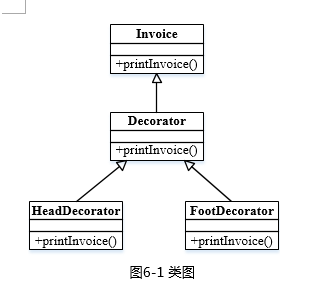Write Hello Erase Hello
Erase Hello Write Hello
编译错误
运行时抛出异常
第1题:
阅读下列代码段,选出该代码段的正确文件名( )。 class A { void method1() { System.out.println("method1 in class A"); } } public class B { void method2() { System.out.println("method2 in class B"); } public static void main(String args[]) { System.out.println("main in class B"); } }
A.A.java
B.A.class
C.B.class
D.B.java
第2题:
现有:classPencil{publicvoidwrite(Stringcontent){System.out.println("Write",+content){}}classRubberPencilextendsPencil{publicvoidwrite(Stringcontent){System.out.println("RubberWrite"+content);}publicvoiderase(Stringcontent)}}执行下列代码的结果是哪项?()Pencilpen=newPencil();((RubberPencil)pen).write("Hello");
A.WriteHello
B.RubberWriteHello
C.编译失败
D.运行时抛出异常
第3题:
下列代码的执行结果是( )。 public class Test { public static void main(String args[]) { System.out.println(7/2); } }
A.3.5
B.3
C.3.0
D.3.50
第4题:
下列程序创建了一个线程并运行,请在下划线处填入正确代码。
public class Try extends Thread{
public static void main(String args[]){
Threadt=new Try();
【 】;
}
public void run(){
System.out.println(“Try!”);
}
}
第5题:
interface A{
int x = 0;
}
class B{
int x =1;
}
class C extends B implements A {
public void pX(){
System.out.println(x);
}
public static void main(String[] args) {
new C().pX();
}
}
错误。在编译时会发生错误(错误描述不同的JVM 有不同的信息,意思就是未明确的
x 调用,两个x 都匹配(就象在同时import java.util 和java.sql 两个包时直接声明Date 一样)。
对于父类的变量,可以用super.x 来明确,而接口的属性默认隐含为 public static final.所以可
以通过A.x 来明确。
第6题:
( 8 )阅读下列代码
public class Test2{
public static void main(String args[]){
System.out.println(5/2);}}
其执行结果是 【 8 】 。

第7题:
现有:classPencil{publicvoidwrite(Stringcontent){System.out.println("Write"+content);}}classRubberPencilextendsPencil{publicvoidwrite(Stringcontent){System.out.println("RubberWrite"+content);}publicvoiderase(Stringcontent){System.out.println("Erase"+content);}}执行下列代码的结果是哪项?()Pencilpen=newRubberPencil();pen.write("Hello");
A.WriteHello
B.RubberWriteHello
C.编译错误
D.运行时抛出异常
第8题:
阅读下列代码段,选出该代码段的正确文件名( )。 class A { void methodl() { System.out.println("methodl in class A"); } } public class B { void method2() { System.out.println("method2 in class B"); } public static void main(String args[]) { System.out.println("main in class B"); } }
A.A.java
B.A.class
C.B.class
D.B.java
第9题:
试题六(共15分)
阅读下列说明和Java代码,将应填入 (n) 处的字句写在答题纸的对应栏内。
【说明】
某发票(lnvoice)由抬头(Head)部分、正文部分和脚注(Foot)部分构成。现采用装饰( Decorator)模式实现打印发票的功能,得到如图6-1所示的类图。

【java代码】
class invoice{
public void printInvoice(){:
System.out.println ( "This is the content of the invoice!");
}
}
class Decorator : extends Invoice {
protected Invoice ticket;
public Decorator(lnvoice t){
ticket = t;
}
public void printinvoice(){
if(ticket != NULL)
(1);
}
}
class FootDecorator extends Decorator{
public FootDecorator(lnvoice t){
super(t);
}
public void printinvoice (){
Systent.out.println( "This is the header of the invoice! ");
(2) ;
}
}
class FootDecorator extends Decorator {
public FootDecorator(invoice t):{
super(t);
}
public void printlnvoice(){
(3) ;
Systent.out.println( "This is the header of the invoice! ");
}
}
Class test {
public static void main(string[] args){
Invoice t =new invioce();
Invoice ticket;
Ticket= (4) ;
Ticket. Printinvoice();
Systent.out.println(“--------------“)
Ticket= (5) ;
Ticket. Printinvoice();
}
}
程序的输出结果为:
This is the header of the invoice!
This is the content of the invoice!
This is the footnote of the invoice!
----------------------------
This is the header of the invoice!
This is the footnote of the invoice!

第10题:
